– October 28, 2018 to June 9, 2019 BCAM, Level 3 LA County Museum of Art –
Robert Rauschenberg’s ¼ Mile Painting
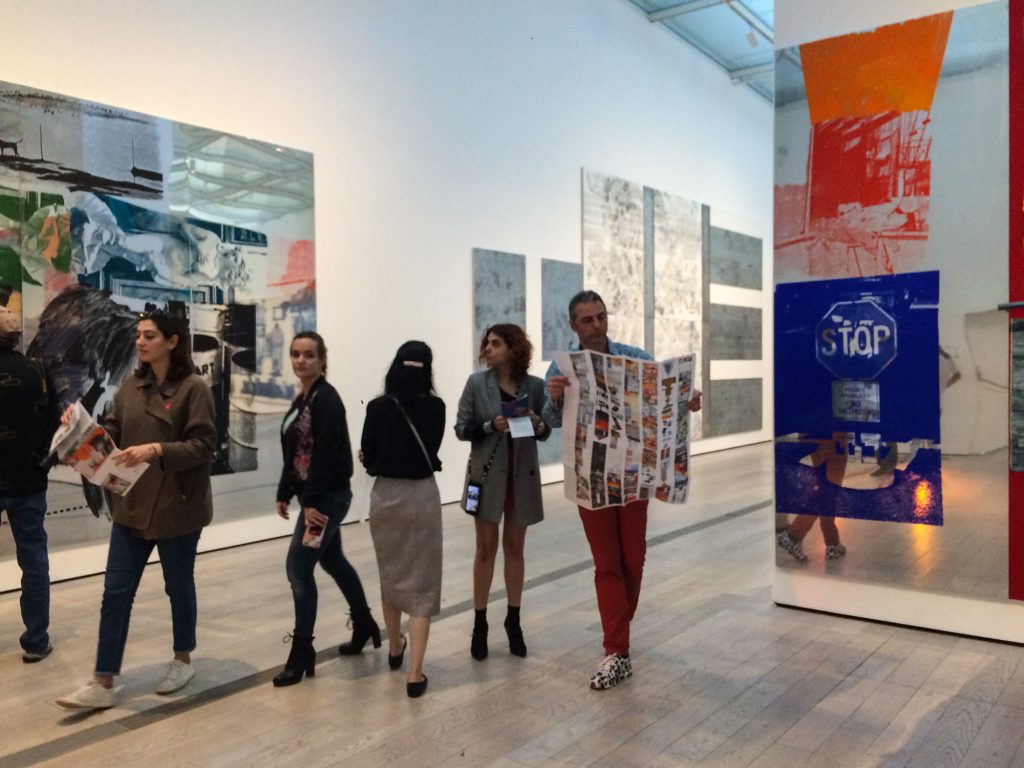
‘Painting relates to art and life’ — according to several art sources, Robert Rauschenberg said this. To accomplish it, he included real things in his painting, so I have been told. Adding an object made the paintings three dimensional and therefore technically sculpture – Combines – as he called them, and ambiguously, he could say they were combinations, not just of painting and sculpture, but of art and life.
I go to see Quarter-Mile on Black Friday with a young friend who drew the place cards for our Thanksgiving Dinner – unique drawings for each person, colorful and not entirely realistic. He’s into art his family told me. After we’re about 185 sections into Rauschenberg’s 191-canvas collection of art and life, my 8-year-old companion asks if this is supposed to be art.
I could have quoted the curators and said this piece, Quarter-Mile or Two Furlong Painting, was assembled over 17 years from 1981 to 1998 and uses many of the icons of this famous artist’s most famous paintings that challenged established art of his time – so-called Modernism – as just more art that hung on the wall, and not what art should be. Art according to Rauschenberg, I could read in the brochure, should be about real life. Of course, I was supposed to leave unsaid the fact that this ‘painting’ looks like trashy mementos of someone’s life stuck on 191 canvases.
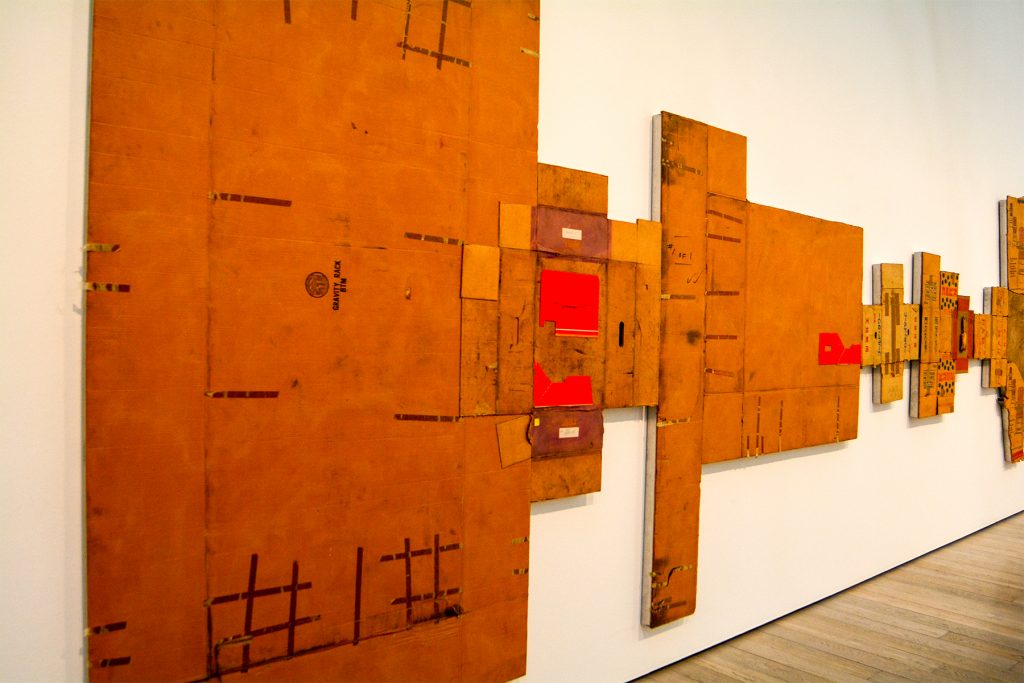
What I did say was even worse. I explained that art, after photography was invented, didn’t have to represent something, and so left without the old mission, artists like Rauschenberg decided to leave a big chunk unexplained, unknown, unfinished and invite — require — you, the viewer, to complete the work.
He gave me an 8-year-old look that said “Thanks for Nothin’”.
If I don’t take the effort I insisted upon my young friend, I can’t blow this off as trash. Nor can I just accept that Robert Rauschenberg is a genius, because the curators said so, and so does Sotherby’s auction house.
COMPLETING the Painting

I’ve been writing a few ‘stanzas’ every morning about ideas I had the day before or in the liminal space just before I am fully awake. I got the idea from Gertrude Stein who I love to read for the surety of a combination of words or ideas that I had not already thought. But in order to have this experience I have to read a lot of Gertrude’s words put down on the page seemingly without rhyme or reason. The idea for my stanzas comes from her Stanzas in Meditation, and I really appreciate her title. To realize the word reading is a meditation came as a relief to me. Maybe my Buddhist friend gets something similar from attending services where every word is in a language she doesn’t understand. And so does her ex-husband when talking to dogs.
I think journaling is this kind of meditation in action. Blah, blah, blah and get it out, get your fingers used to forming forms and hopefully sentences. Just write 15-minutes every morning, fill three pages, write 1,000 words, if you aspire to write you’ve seen this advice. But this is not communication – it is the noise. The noise like the Buddhist prayer, the yoga foreign chanting and Stein’s repetition. It gets you receptive to what you haven’t already thought.
There is a big different between the exercise of journaling and writing to inform, or poetry, or literature. And that difference is the discretion and forbearance of the writer to not include every thought passing by their particular skull.
Thus, the question that arose out of my sleep this morning was: who writes essays like Susan Sontag in this day and age? The answer is anyone who is included in the New Yorker. And not blog writers like me, who would cut this paragraph if they had any forbearance because the subject, here is visual art.
Has Rauschenberg really curated the images that he included in this painting or was he just trying to fill space in his 4-block-long journal?
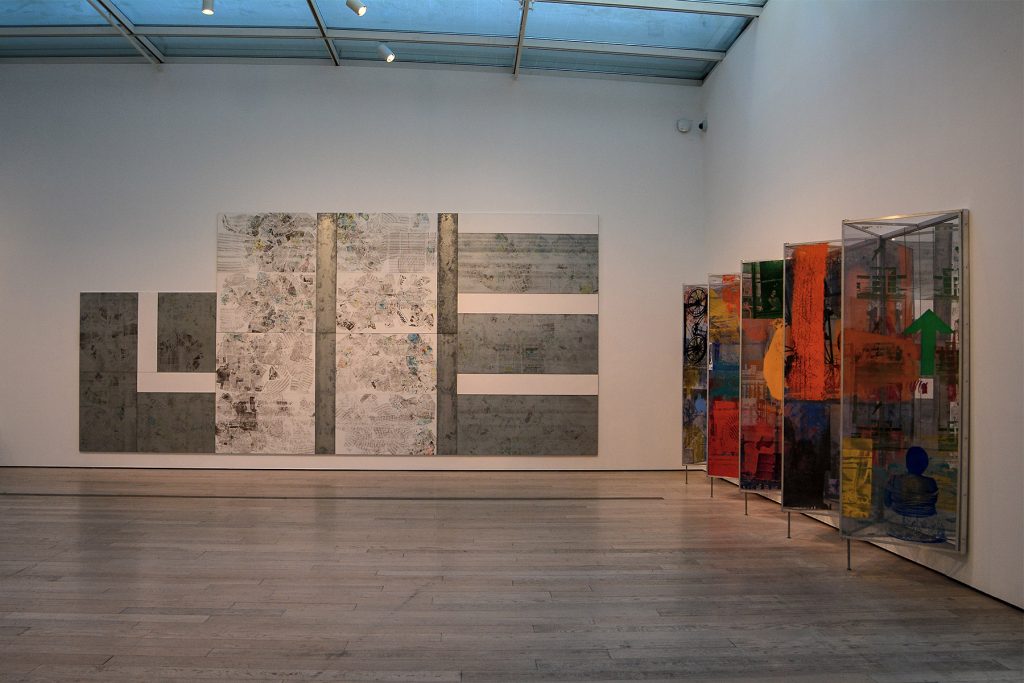
“By the time you’ve gone a quarter of a mile, if you have any mind at all, you’ve certainly forgotten what you had in mind when you started”
Robert Rauschenberg, 1982
A quarter mile is about four blocks and that is how far we had to walk between parking space and LACMA, where the 1/4 Mile is being shown for the first time in its entirety. Apparently some of the panels were censored by the Chinese when they were shown there, so less than entirely shown. A train stop is in the works across the street from LACMA which will eliminate the 4-block walk that we were able to enjoy today. I’ve been on the telephone making a walk like this from parking space to destination and forgotten where I parked my car – certain forgotten what I had in mind when I started. But that phone call wasn’t art. Nor was it really living – I think it was an argument about my cable bill.
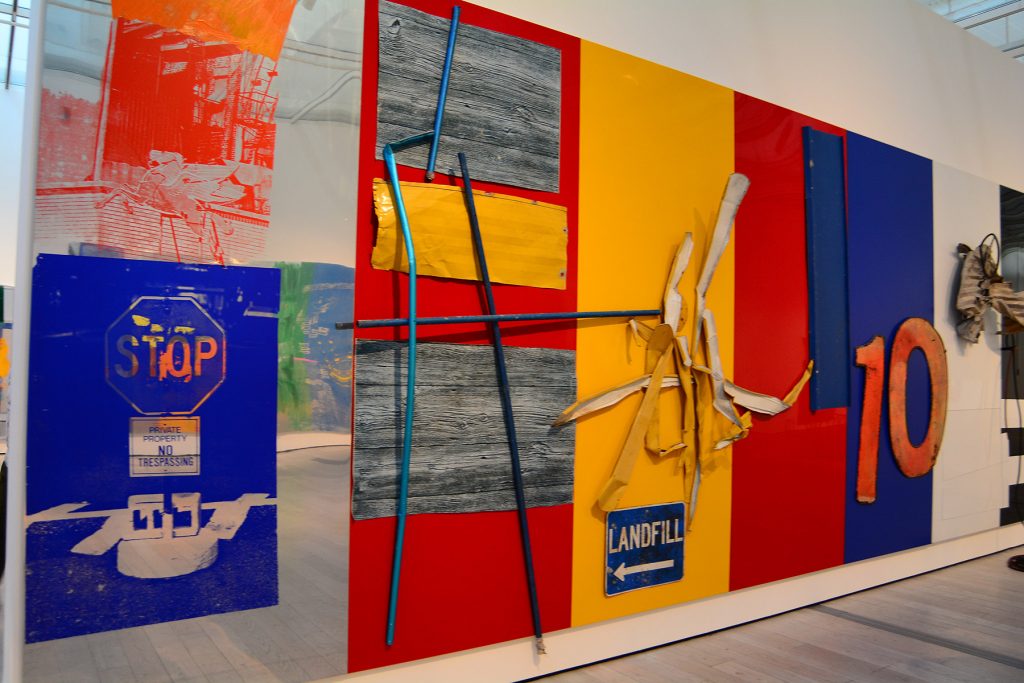
But I have had real life walks that are like this show. For example, in the first panel a t-shirt was glued to the canvas — it exactly reminded me of the abandoned shirt I’d seen plastered on the pavement by rain on a recent walk downtown. It lacked some of the textures and ridges in my life experience but panels further into Rauschenberg’s painting emphased those beautifully. This first panel had more that concrete as I’d experienced walking: wallpaper, photo collage and some little drawing. Like a properly edited blog post, more imagery was packed into each panel than on our walk from car to museum — well except for the food trucks lined up nose to boot across for the museum. The trucks were collaged with images of food, descriptions, prices pasted over old one and some peeling. Peeling, or aging – life, really, was no longer going to be happening to Rauschenberg’s painting. It was being cared for like the Mona Lisa. Irony.
We ordered some stuff from the food trucks, and eating it did remind me how nice life is. It would have been nice, as we were strolling through the painting, if someone had called out my name and handed me a bowl of Jambalaya.
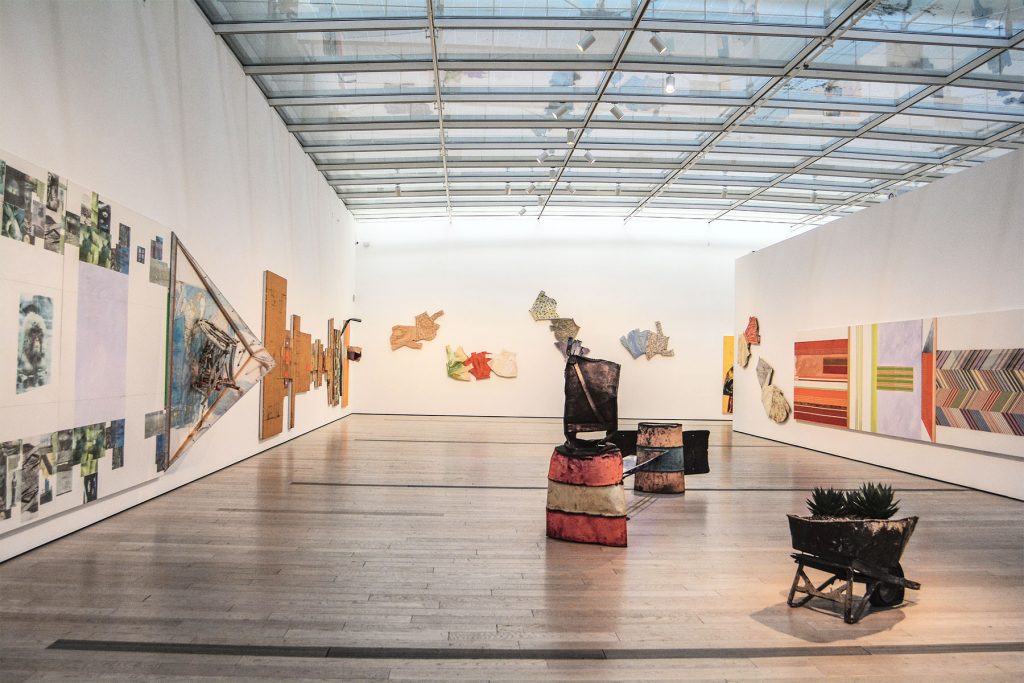
And you know, maybe Rauschenberg did. He offered me a lawn chair, albeit stuck 90-degrees from useful onto the canvas. But underneath the bony frame of the lawn chair was a world map. And to me maps are the visual equivalent of good food – a dessert image. A printed map, like the newspaper clippings pasted on other panels, are stuck in time. What countries named on this map are no longer as they were then. Every map shows the hand of its maker. This one was from National Geographic. They don’t use the orange peel method at the poles, so the bottom and top of the map are filled in with more ocean than real life. And Rauschenberg had cut off some of this watery extrapolation by putting a pyramid dome over it.
There are a lot of painted panels with bright orange backgrounds, outlines of human’s standing there on the canvas flat like giant paper dolls waiting to be dressed, shirts pasted on more canvases, old-school photo transfer process of photos from magazines. Sometimes it feels like TV – it just keeps going image after image.
Had it been one canvas in this style, hanging solemnly in a prestigious museum, you or I might take the time to find it really interesting, noting all the references, maybe critique it for a lack of balance or good composition, or disharmony from lack of a range of values of the colors – too much intensity. But with this many paintings all lined up side by side, with arrows, brochures and staff making you feel the full length of it, you loose your sense of being able to analyze what works and what does or does not work. I found myself enjoying the occasional white space and look forward to the walk back to the car where I can take up again what hangs on me, a desire to find delight in a life that keeps marching on.
That’s it. Enough hints from me about whether there is any life in this painting. You have blocks to go before you sleep.
In this review, the New York Times reproduces a small part of the experience.

